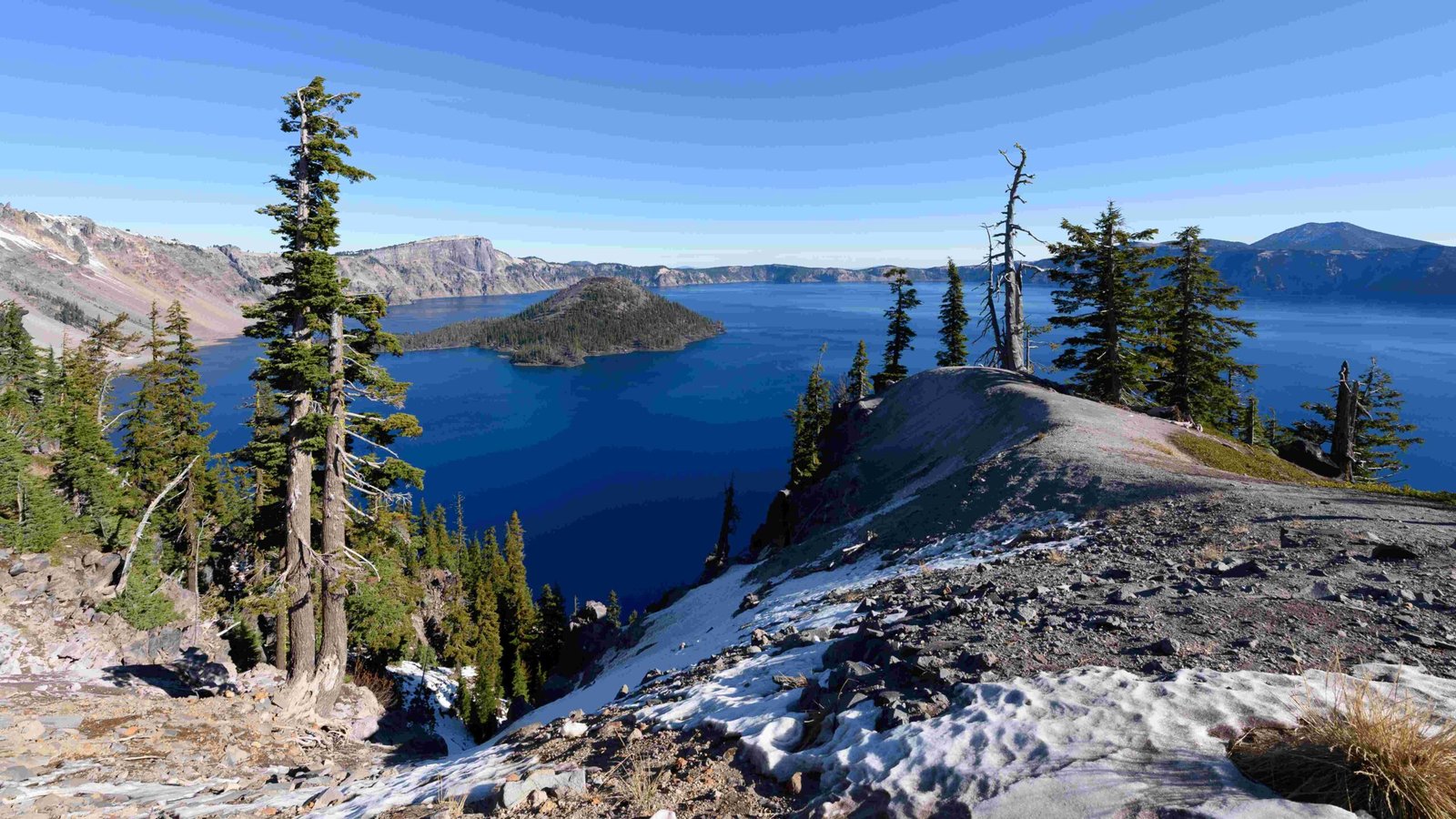Crater Lake, formed within the caldera of the ancient Mount Mazama volcano, is a testament to Earth’s dynamic geological processes. This natural wonder, located in Oregon, USA, resulted from a cataclysmic eruption about 7,700 years ago. The lake’s pristine blue waters and surrounding cliffs tell a story of volcanic activity spanning over 400,000 years. Today, it stands as a captivating destination for both scientists and tourists, offering insights into the powerful forces that shape our planet.
What is the Geological Structure of Crater Lake?

Crater Lake sits within the caldera of Mount Mazama, an ancient volcano that was part of the Cascade Range volcanic arc. The volcano’s formation began approximately 400,000 years ago through the episodic growth of overlapping shield and composite volcanoes. Before its climactic eruption, Mount Mazama stood at an impressive height of about 3,700 meters (12,000 feet) above sea level.
The caldera, formed by the collapse of Mount Mazama, is approximately 2,148 feet (655 meters) deep. This massive depression is now partially filled by Crater Lake, creating a unique geological feature that attracts researchers and visitors alike.
What are the Primary Rock Types Found at Crater Lake?
The geological composition of Crater Lake and its surroundings is characterized by three primary rock types:
- Andesite
- Dacite
- Rhyodacite
Early eruptions of Mount Mazama primarily produced andesite. However, as the volcano’s activity evolved, particularly in the last 70,000 years, eruptions became more explosive. These later eruptions produced silica-rich magma, resulting in the formation of dacite and rhyodacite.
How Did Crater Lake Form?

The formation of Crater Lake is a fascinating geological story that unfolded over hundreds of thousands of years. Let’s explore the timeline of significant events that led to its creation:
- 400,000 Years Ago: Mount Mazama begins to form through the growth of overlapping volcanoes.
- 70,000 Years Ago: The volcano’s eruptive style changes, becoming more explosive with silicic magma eruptions.
- 7,700 Years Ago: The climactic eruption occurs, leading to the collapse of Mount Mazama and caldera formation.
- Post-Caldera Formation: Smaller eruptions within the caldera create features like Wizard Island and Merriam Cone.
- Lake Formation: Over 250 to 720 years, rain and snow accumulation fill the caldera to its present-day level.
What Was the Impact of Mount Mazama’s Eruption on the Surrounding Landscape?
The climactic eruption of Mount Mazama had a profound and far-reaching impact on the surrounding landscape:
- Pyroclastic flows devastated areas up to 64 km (40 miles) away
- A blanket of pumice and ash extended as far as central Canada
- Surrounding river valleys were partially filled with hot pyroclastic flows and rock debris
This eruption was truly massive, ejecting about 50 cubic kilometers (12 cubic miles) of rhyodacite and causing widespread changes to the regional topography.
What is the Eruption Timeline and Characteristics of Crater Lake’s Volcano?
The volcanic activity at Crater Lake can be divided into three main phases:
- Pre-Caldera Eruptions: Activity over 400,000 years, with highly explosive eruptions in the last 70,000 years.
- Climactic Eruption: The major event 7,700 years ago that led to caldera formation.
- Post-Caldera Eruptions: Smaller eruptions within the caldera, including the creation of Wizard Island.
What are the Recorded Eruption Events at Crater Lake?
| Event | Time Period | Description |
|---|---|---|
| Preclimactic Pyroclastic Eruptions | Before 7,700 years ago | Small-scale eruptions producing rhyodacite lava flows |
| Climactic Eruption | 7,700 years ago | Massive eruption leading to caldera formation |
| Post-Caldera Volcanic Activity | After 7,700 years ago | Eruptions building Wizard Island and other features |
What is the Current State of Volcanic Activity at Crater Lake?
While there are no current eruptions at Crater Lake, the area is not dormant. Hydrothermal activities are present at the lake floor, indicating that warm water enters the lake from below, heated by hot rock beneath the fractured caldera floor.
How is Crater Lake Monitored for Volcanic Activity?
Scientists from various agencies, including the U.S. Geological Survey and the National Park Service, continuously study and monitor Crater Lake:
- The USGS Cascade Volcano Observatory makes periodic geodetic measurements
- Monitoring focuses on detecting any tilting or swelling of the caldera area
- These efforts aim to forewarn of any potential renewed volcanic activity
What are the Potential Hazards at Crater Lake?
While the likelihood of another caldera-forming eruption is low, potential hazards at Crater Lake include:
- Renewed volcanic activity
- Lahars (volcanic mudflows)
- Earthquakes
How Can Visitors Experience Crater Lake’s Geological Wonders?
Crater Lake National Park offers numerous facilities and activities for visitors interested in its geological significance:
- Visitor Centers: Provide comprehensive information on the geology and history of Crater Lake
- Guided Tours: Rangers and park guides offer tours focusing on geological features and history
- Hiking Trails: Trails like the Cleetwood Cove Trail allow exploration of the caldera rim and lake shore
- Educational Programs: The park offers various programs detailing the geologic history and significance of Crater Lake
By visiting Crater Lake, tourists can witness firsthand the incredible geological processes that shaped this unique landscape over hundreds of thousands of years.

